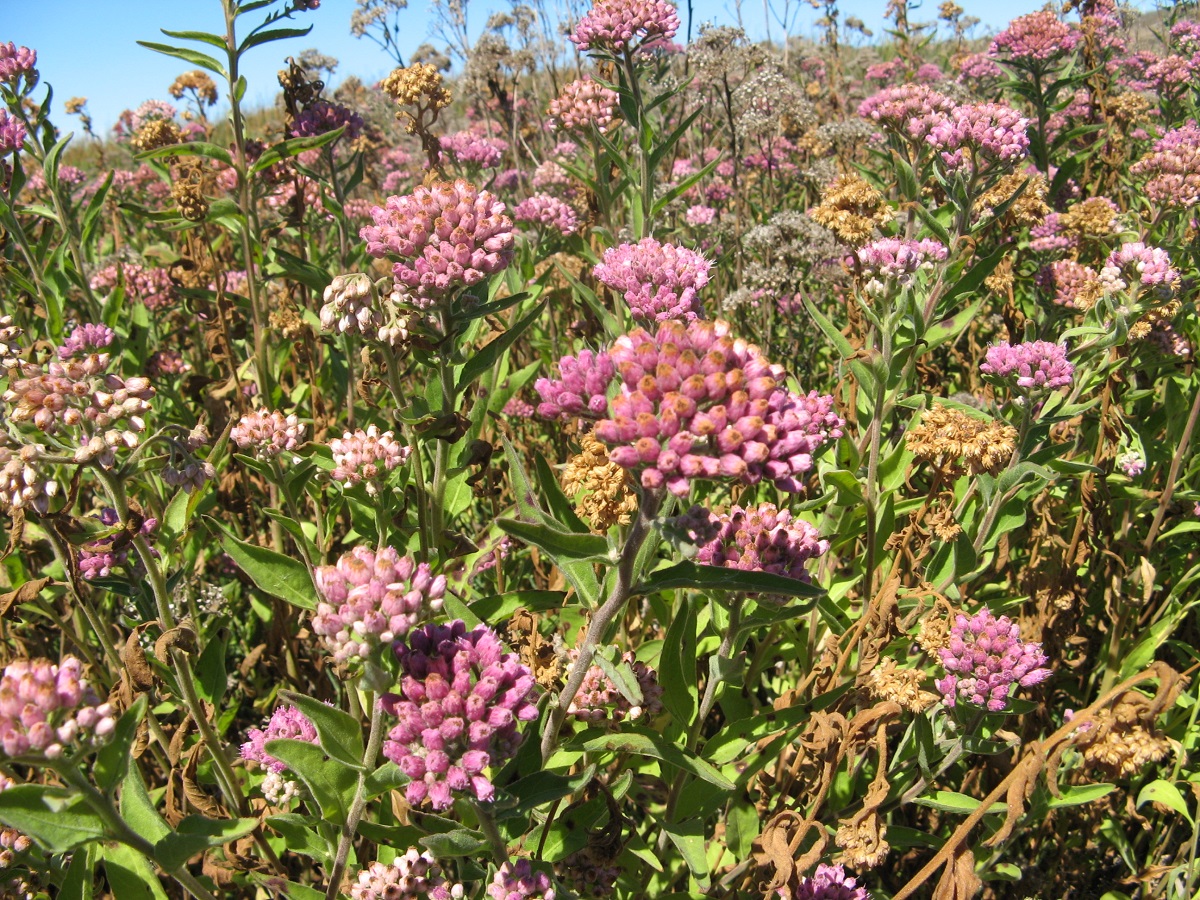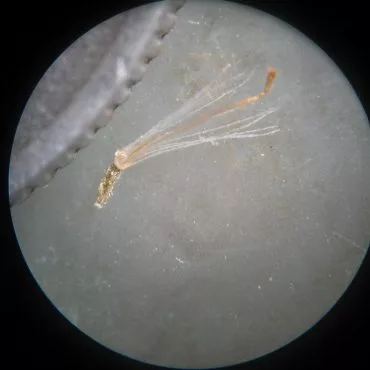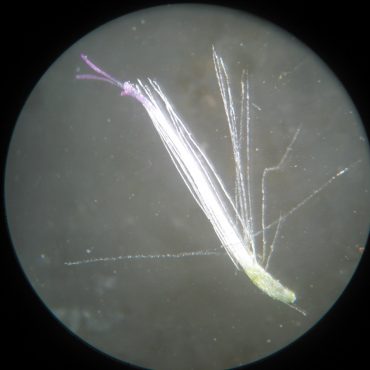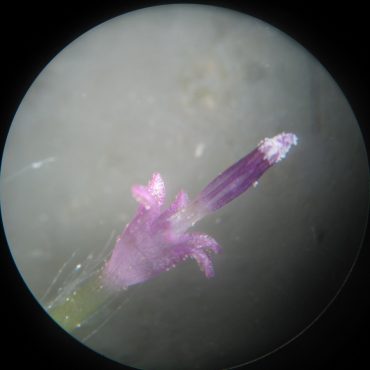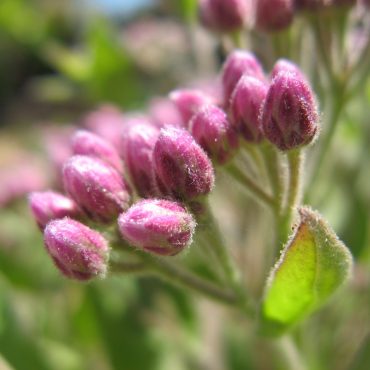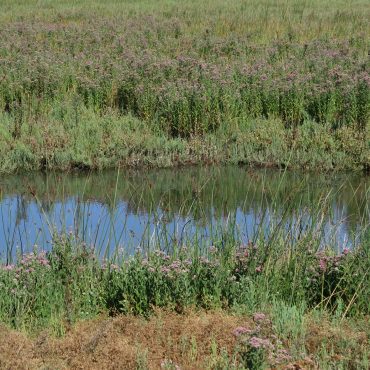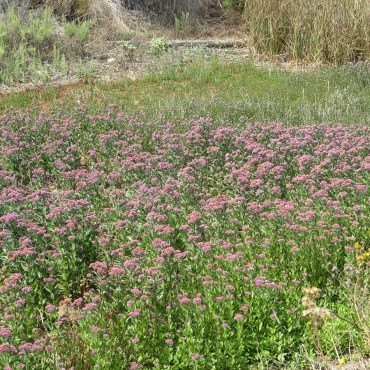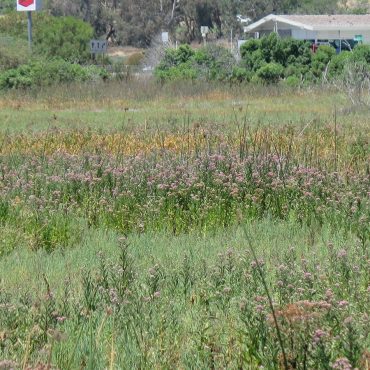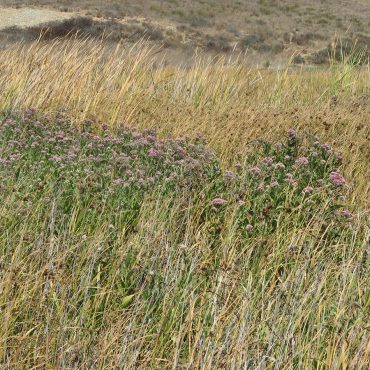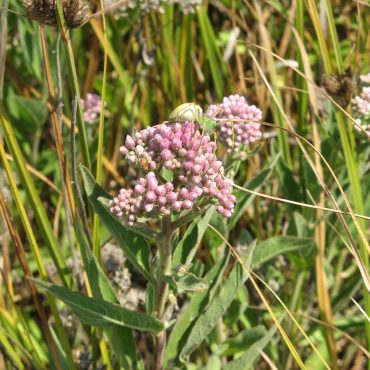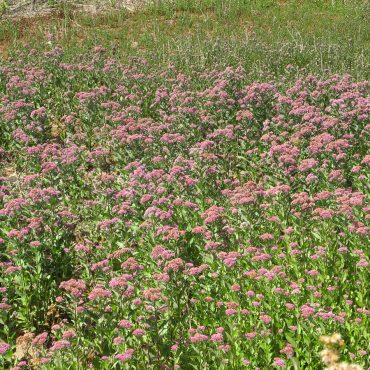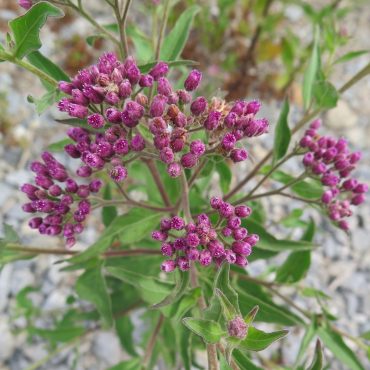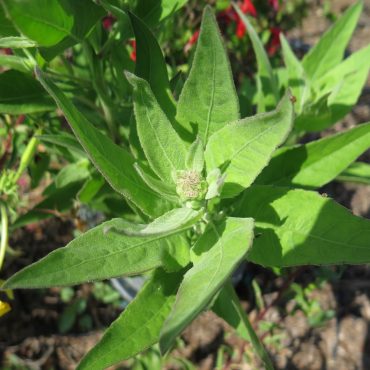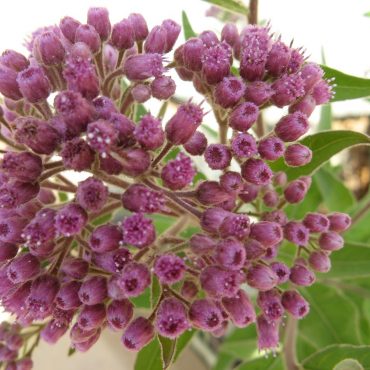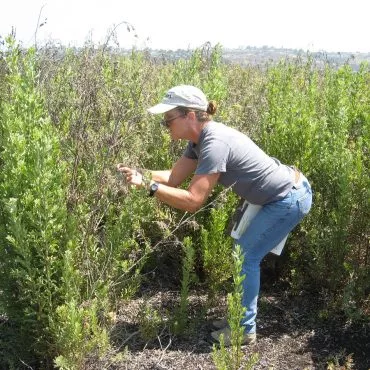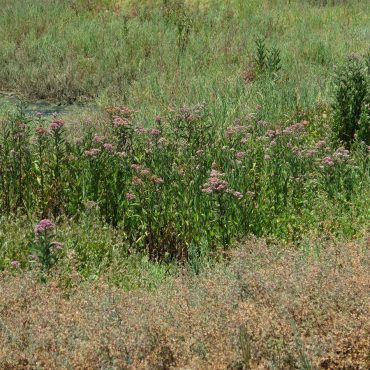Salt marsh fleabane is an annual or short-lived perennial herb that produces one to several upright stems from a subsurface rhizome. Stems are generally less than four feet (1.5m) tall, green or purple/brown near the base. Stems and leaves are covered with short glandular hairs that give the plant a soft, velvet feeling and secrete a sticky, pungent substance. The odor has been called “spicy,”4,59 “camphor-like, “126 “ill-scented” 294 and “downright weird.”292
The ovate leaves are soft green; the larger ones are about five inches (13 cm) long and about 2 3/4 inches (7 cm) wide. Leaf margins are smooth or with small, widely spaced teeth; margins sometimes have a pinkish tinge.
Small flower heads are arranged in flat-topped or round-topped terminal clusters. The urn-shaped receptacle has about two dozen phyllaries in several series. Phyllaries are green below rapidly becoming magenta above. There are no ray florets. The outer disk florets are pale cylinders; each expands to three or four magenta lobes less than 1/64 inch (0.4 mm) across; these florets lack stamens and have one pistil with a slender magenta two-branched style and linear stigmas and a pale pappus. The ovary is inferior. The inner disk florets are somewhat larger than the outer florets, each pale cylindrical corolla expanding to five magenta lobes about 1/32 inch (0.7 mm) across. The inner florets are functionally male with a sterile pistil with an unbranched style surrounded by five stamens with the anthers fused into a tube around the style. Anthers are magenta with white pollen. Most flowers bloom between March and July.1
The fruit is tiny (1 mm), dry and one seeded, attached to a bristly parachute (the pappus) at one end. The pappus is about 1/8 inch (1/2 cm) long, tawny at the base, becoming whiter at the ends.

